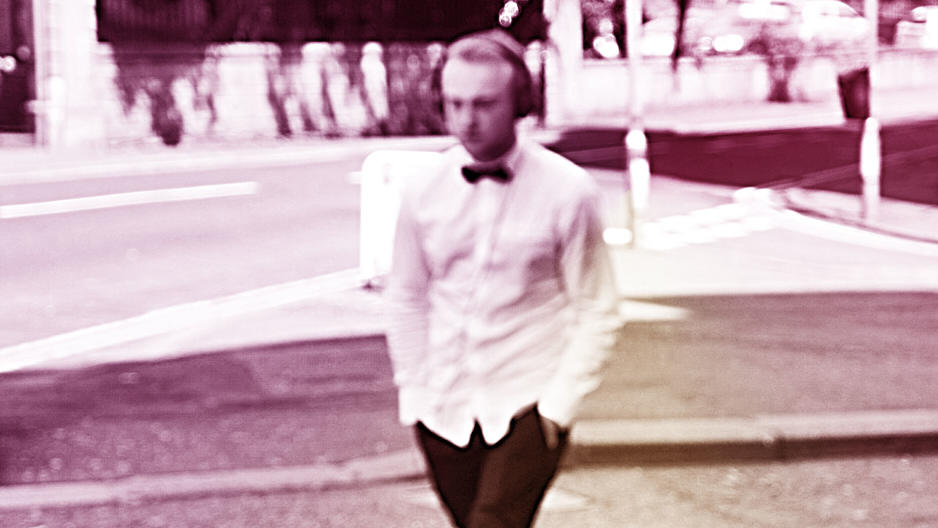How I Successfully Pitched Investors As A 22-Year-Old Startup Founder
My cofounders and I were 21 and 22 when we started Next Big Sound, and by far the biggest challenge we faced was in convincing investors they should trust us with their money. That was in 2009, and around that time Mark Zuckerberg was one of the youngest founders to have ever raised venture capital, at 19 years old. Whatever encouragement we drew from that knowledge, it still wasn’t easy pitching people 20 to 40 years older than we were.
We eventually pulled it off by telling a good story that made sense. If it sounds simple, it actually took a while to get right. Here’s a look at the process we used to craft and test a narrative that sold our vision to people so much our senior.
Find The Story
Our story started with the music industry in 2009, which was in a state of dynamic change. I already had experience in the field, but it mostly amounted to stapling weekly CD sales reports together as an intern at the biggest label in the world.
That counted for more than you might think. Because I had access to that data, I could tell the industry wasn’t paying attention to where people were spending more of their time and attention. As I saw it, there was an opportunity to build a data company that tracked all of this information.
Venture capitalists categorically hate the music industry, but most love data analytics businesses. That became the starting point for our narrative. In our story, we positioned music as just the next industry to be transformed by data, with Next Big Sound leading the charge.
If I hadn’t workshopped a music-centric version of this investor pitch with investors over many months, we would’ve ended up with a very different (and probably unsuccessful) story. Instead, we used compelling examples to drive the story home. Michael Jackson had just died that summer. To give prospective investors a sense of the volume of online music data, we showed that his actual sales spiked 1,000% following his passing, but online activity involving Jackson jumped more than 10,000%. Clearly there was a lot of interest that wasn’t being reflected just in music sales.
Make Sure It’s Also About You
If hitting on the right narrative to position your startup is about understanding investors (in this case, their penchant for data companies over music companies), it’s also about helping them understand you. That’s where your age can be an asset, not a detriment. After all, pitching is personal; every given founder has a unique potential advantage over every other founder, and these advantages are usually the best place to find your story.
What unique advantage could three first-time founders have in a highly competitive marketplace in which venture capitalists like Foundry Group were reviewing thousands of pitches a year? How about the fact that as recent college graduates we were used to living with lots of roommates and on very little money?
We spent the first three years of the business living in a six-bedroom house with the first three people we’d hired. That’s the reality that drove part of our story that we were “cheap to keep alive.” What about our unique hiring advantage, where we found we could siphon off some of the most talented engineers from our alma maters? That made it into our story, too.
There were other ways to mine our biographies for selling points. What edge could a small team from Boulder, Colorado, have over global enterprise software companies selling into Sony Music? How about the fortunate fact that my freshman year of college happened to be the same year that Facebook launched? I’d grown up with the technology we were tracking.
When I stood in the boardroom presenting to the label executives, I looked a lot more like the generation they associated with these new technologies than our competitors, who sent in seasoned sales executives. Plus, by the time I got in the room, I’d also presented to hundreds of label employees. My age aside, I knew which parts of our demo drove the most excitement, and which features caused people to tune out and check their phones. Over time, I was able to refine our demo for investors accordingly.
Test Your Story, Then Test It Again (And Again)
I’ve been incredibly fortunate to work with my two cofounders, David and Samir. Whenever we’re crafting fresh narrative to take to investors, we workshop them first among ourselves.
That’s the first test. Once we go back and revise it, we regroup again for a second test, usually with some portion of our larger team—which can include Next Big Sound’s board of directors, our current or potential customers, vendors, partners, investors, or just friends of the company. This is where the wisdom of people who have years of relevant experience can send us back to the drawing board again, and save us from making big mistakes when it really counts.
This way, by the time the story goes out to a broad audience at a conference or in an email blast, a fundraising roadshow, a formal sales presentation, or a company all-hands meeting, it’s been fully battle-tested.
Looking back, I knew as much about music data as a 22-year-old as any of the people I was selling to. Our story worked because I was able to convey that. The phrase “nobody knows anything” isn’t meant disparagingly—it’s just a recognition that no one can predict the future with 100% accuracy. That is, until you tell them a story about the future that makes sense, with you at the center of it.
Alex White is head of Next Big Sound at Pandora, where he oversees a team of two dozen data engineers, designers, product managers, and data scientists focused on prediction research and cross-platform performance measurement.
Fast Company , Read Full Story
(13)



